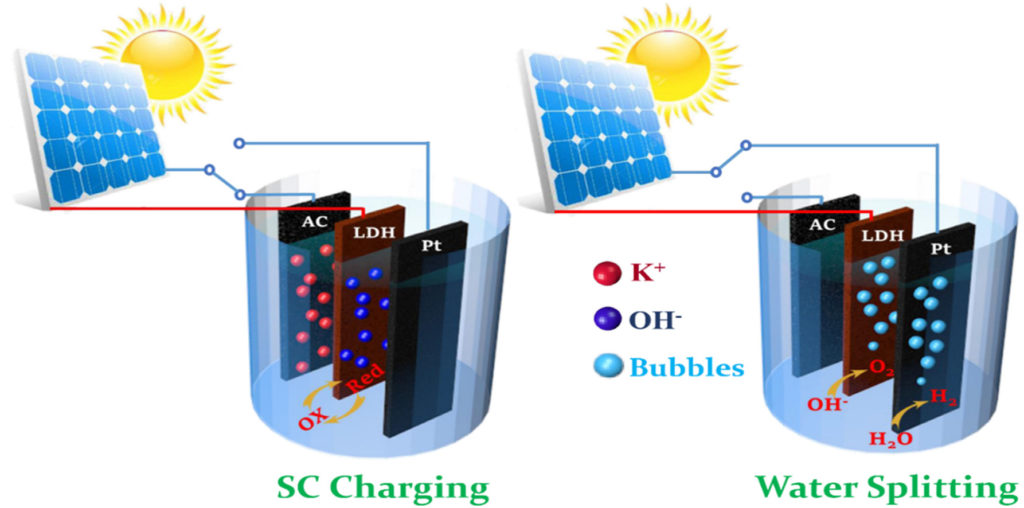Created a solar supercapacitor that produces hydrogen and electricity at the same time
The proliferation of hydrogen vehicles is not as fast as electric vehicles, although they operate on clean, relatively affordable fuel, and the lack of infrastructure for industrial production, distribution and storage of hydrogen remains a major obstacle in their way. But the latest work by scientists at the University of California, Los Angeles (UCLA) will help lower the barrier to the technology’s release to the masses with a new device that uses sunlight to simultaneously produce hydrogen and electricity.
UCLA researchers have created a hybrid device that combines a supercapacit with a hydrogen fuel cell and keeps the system running with solar energy. Along with conventional positive and negative electrodes, the device has a third electrode that can either store energy in the form of electricity or use it to separate water into its constituent hydrogen and oxygen atoms, a process called water electrolysis.
A distinctive feature of the device is also the ability to produce hydrogen fuel in an environmentally friendly way. Currently, about 95% of the world’s hydrogen production comes from fossil fuel processing (e.g. natural gas), a process that releases large amounts of CO2 into the atmosphere, said Maher El-Kadi, co-author of the study.

“Hydrogen energy is not green unless it is produced from renewable sources,” El-Kadi said. He added that the use of solar cells and available water-splitting materials had enormous potential in reducing the cost of hydrogen production and that the approach could eventually replace the existing fossil fuel-based method.
According to scientists, combining supercapacitor and water electrolysis technology in one device is a progress that can be compared to a smartphone that combines a phone, a web browser and a camera.
To ensure the maximum surface area that will interact with water and thus increase the amount of hydrogen and the amount of charge of the supercapacitor, the researchers developed nanosceveric-level electrodes – a thousand times thinner than the thickness of a human hair. Although the device they created fits in the palm of your hand, they say that making larger versions will also not be particularly difficult.
The new device can make hydrogen vehicles more accessible to the masses because it produces hydrogen using nickel, iron and cobalt elements that are more common and cheaper than platinum and other precious metals that are currently used to produce hydrogen fuel.
The scientists’ work was published in the journal Energy Storage Mater
ials.Source:ecotechnica.com.ua